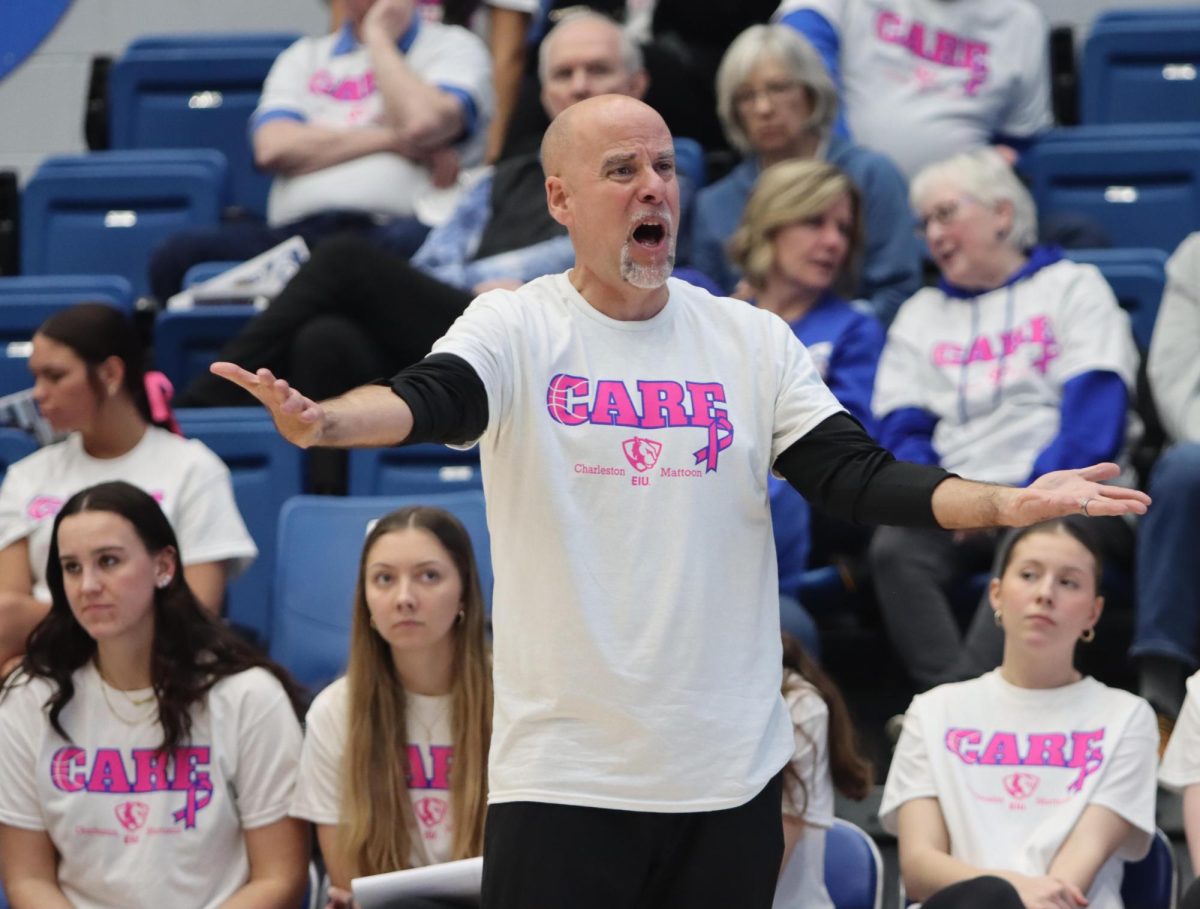Examining historic Charleston
Editor’s Note: This is the first installment in a series focusing on old, historical houses in and around the Charleston area. This serves as the introductory article, and features on specific houses will follow in the coming weeks.
Charleston is home to pieces of history dating back to the 1800s spread throughout town – literally “home,” because many of these pieces of history are, in fact, houses.
The Historic Preservation Commission of Charleston lists one historic district containing more than 100 buildings on Sixth and Seventh streets along with two landmark buildings.
Kit Morice, a member of the Historic Preservation Commission and a curator at the Tarble Arts Center, said she has been involved with preserving Charleston’s historic buildings for quite some time.
“The city of Charleston does have a local historic preservation ordinance, and we’re also a certified local government,” Morice said. “That is a certification from the Illinois Historic Preservation Agency that recognizes that our ordinance and the way we function as a commission of the city is best practices in the field.”
Morice said the process to get a house or other building listed by the commission can be done by the house owner’s personal nomination or a nomination from the commission itself.
“So far, everything that’s listed, we’ve done the nominations for,” she said.
Charleston currently has two landmark buildings and one historic district listed.
“The process includes a building survey where you walk on the sidewalk and observe if the house still has a lot of integrity,” she said. “Regardless of the age of the house, we have to check and see if it has a lot of its original features left.”
The commission also looks at what has changed over time and whether or not the changes are also old.
“You’re basically reading the building,” Morice said.
For a district, 75 percent of the buildings should have integrity and contribute to the overall feeling and character of the area.
“In surveying Sixth and Seventh streets, EIU graduate students and historical administration did a lot of the work,” she said. “We went back and added some more detail, but they did the initial surveys.”
Nominations include historical information about the city, how the neighborhood developed, information on builders and architects, and relevant building dates and styles.
Property owners are then notified, along with the owners of the property around their house/land.
Afterwards, a public meeting takes place to discuss making an area a historic district.
“That’s an opportunity for property owners to come and ask questions, raise concerns and gain support,” Morice said. “With Sixth and Seventh streets, we wanted to be very proactive and make sure there weren’t any misunderstandings out there.”
A public meeting took place for Sixth and Seventh street homeowners before any legal action was taken to start the process.
“Some people do have a lot of concerns about what restrictions there will be if they’re in a district,” Morice said.
The Charleston City Council has the ultimate say in what does or does not get listed, Morice said.
“It’s a similar process for a landmark building,” she said.
One of the landmark buildings is a private home on Monroe Avenue, and the other is the Will Rogers Theatre on the Square.
Morice said there are slightly higher standards for a landmark building as opposed to a building within the historic district that is contributing.
“If you have many houses together as a collection, you allow for more alterations,” she said. “A landmark should be something that really just stands out as a terrific example of its period or craftsmanship.”
Many of the houses in the historic district are rented out to Eastern students, but Morice said there are not as many student renters in the district as there used to be.
“One of the reasons that we even have a preservation ordinance in the city of Charleston is because of a group of homeowners who bought houses that were rentals and have taken the time and money to rehabilitate them to contemporary use while maintaining those key features,” she said.
Sixth and Seventh streets were upzoned to allow for bigger occupancy, but because many students moved in, single-family homes were pushed out, Morice said.
“It wasn’t until the early 2000s that the preservation ordinance was passed,” she said.
Morice said there are plenty of new apartment complexes in Charleston, and old houses should not suffer at the expense of new ones.
In order to remodel, homeowners in the historic district or of a landmark building need to go through a design review from the Historic Preservation Commission.
“It’s a pretty short, straightforward application,” she said. “We try to work with the homeowner and understand what their goal is.”
Any remodeling should be done in a fashion that is sensible to the historic value of the building, Morice said.
“We have no say over (house) color or landscaping,” she said. “We knew we had to be somewhat flexible and look at the big picture in terms of what was really important.”
Robyn Dexter can be reached at 581-2812 or [email protected].












































